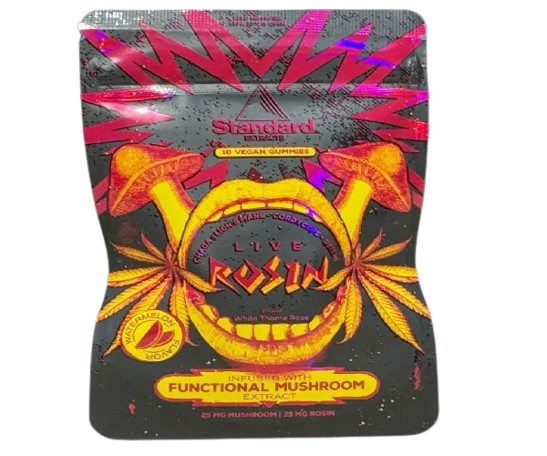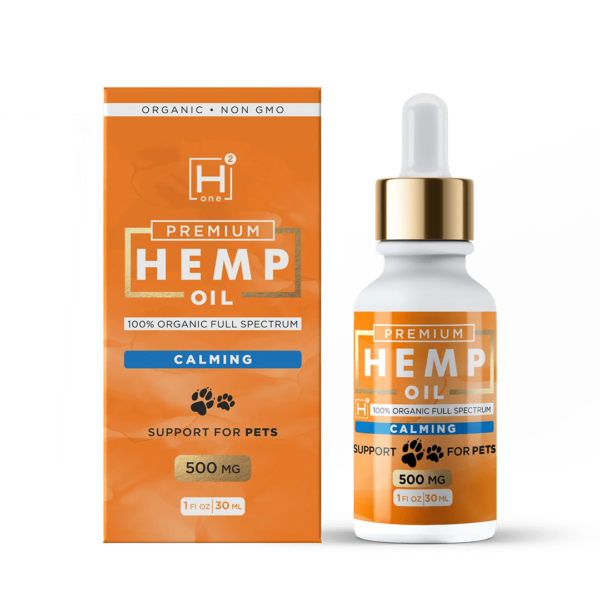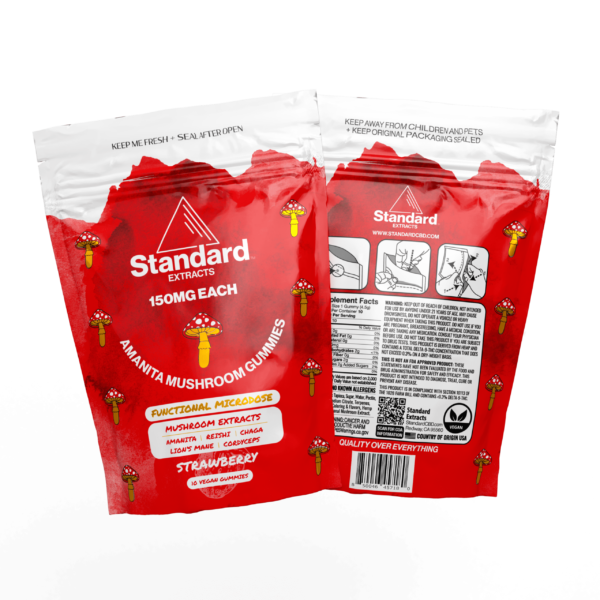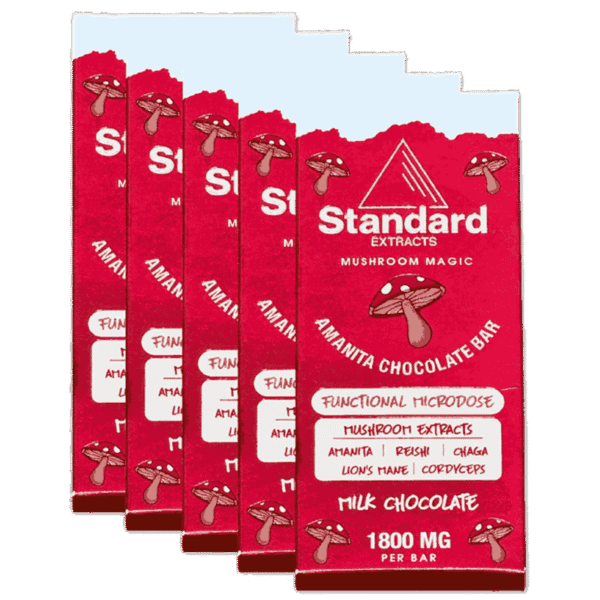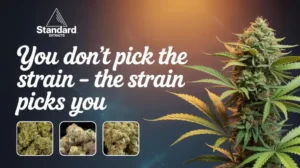Top Legal Cannabis Companies (2025) + 5 Big Failures
Updated for 2025. Built for investors and wellness readers alike, this guide highlights notable publicly traded cannabis leaders, recent stock standouts, and cautionary tales – so you can understand the market without the hype.
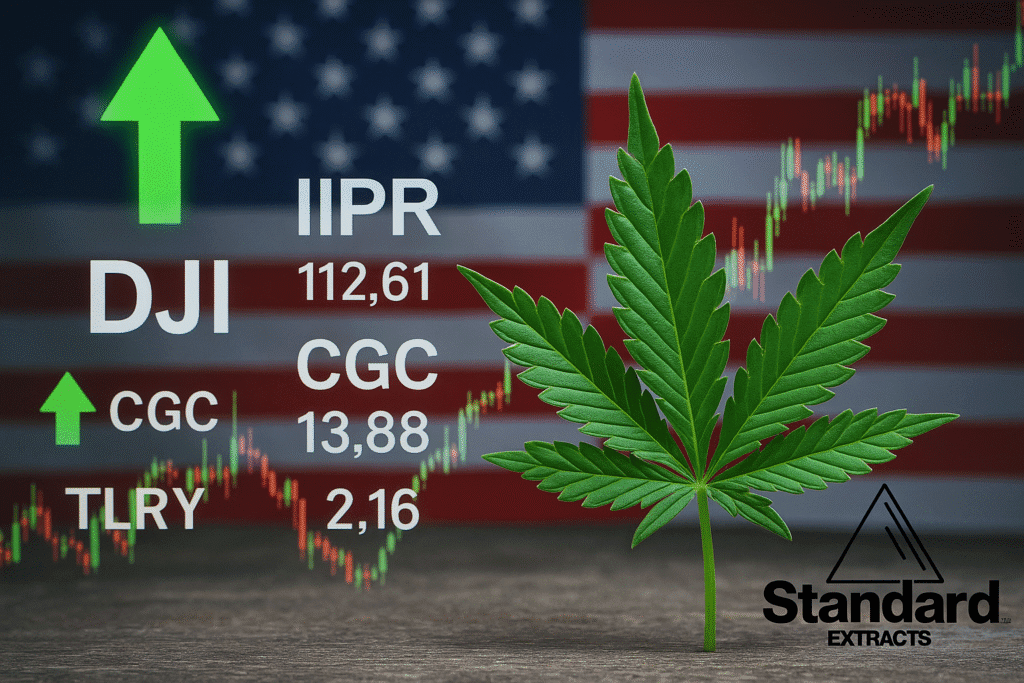
Table of contents
- Why Cannabis Stocks Are Back in the Spotlight
- How We Chose the Top Legal Cannabis Companies
- Top 10 Publicly Traded Cannabis Companies (2025 Edition)
- Best Performing Cannabis Stocks in 2025 (What’s Driving Returns)
- Five Cannabis & Mushroom Giants That Went Out of Business – and What We Can Learn
- Trends Reshaping the Legal Cannabis Industry in 2025
- Risks and Realities of Investing in Cannabis Stocks
- Lessons from the Rise and Fall of Cannabis Titans
- Where Hemp & Functional Mushrooms Fit In – The StandardCBD Difference
Why Cannabis Stocks Are Back in the Spotlight
The legal cannabis market is experiencing a cautious but undeniable comeback. After a few years of turbulence marked by over-expansion, regulatory gridlock, and falling share prices, 2025 is showing signs of stabilization – and even growth – across much of the industry.
Legalization Wave: U.S. & Global Momentum
As more U.S. states move toward full legalization and international markets like Germany, Switzerland, and Thailand open regulated frameworks, investors are once again taking a hard look at the top legal cannabis companies and publicly traded hemp and CBD brands leading this next wave.
Unlike the speculative frenzy of 2018–2021, today’s cannabis sector is defined by discipline, data, and diversification. The top-performing companies are focusing less on hype and more on fundamentals – things like cash flow, brand reputation, and vertical integration. From U.S. giants like Curaleaf Holdings (OTCQX: CURLF) and Green Thumb Industries (OTCQX: GTBIF) to diversified hybrids like Tilray Brands (NASDAQ: TLRY), the most successful operators are finding balance between regulatory compliance and consumer demand.
Volatility ≠ Bad: Opportunity for Long-Term Investors
At the same time, cannabis investing remains volatile. Stock performance often swings with political headlines, quarterly earnings, and changing public sentiment. But savvy investors understand that volatility can also bring opportunity – especially when combined with a long-term outlook and thorough research.
This article takes a grounded approach. We’ll explore:
- The top 10 publicly traded cannabis companies making waves in 2025
- The best-performing cannabis and hemp stocks of the year – and why
- Five major cannabis and mushroom brands that failed (and the lessons they teach)
- Emerging industry trends shaping 2025 and beyond
Whether you’re an investor searching for the “best cannabis stocks to watch this year” or a wellness entrepreneur studying market shifts, this guide will help you understand where the industry stands today – and where it’s headed next.
Let’s start by defining how we selected these standout companies – and what separates hype from healthy growth.
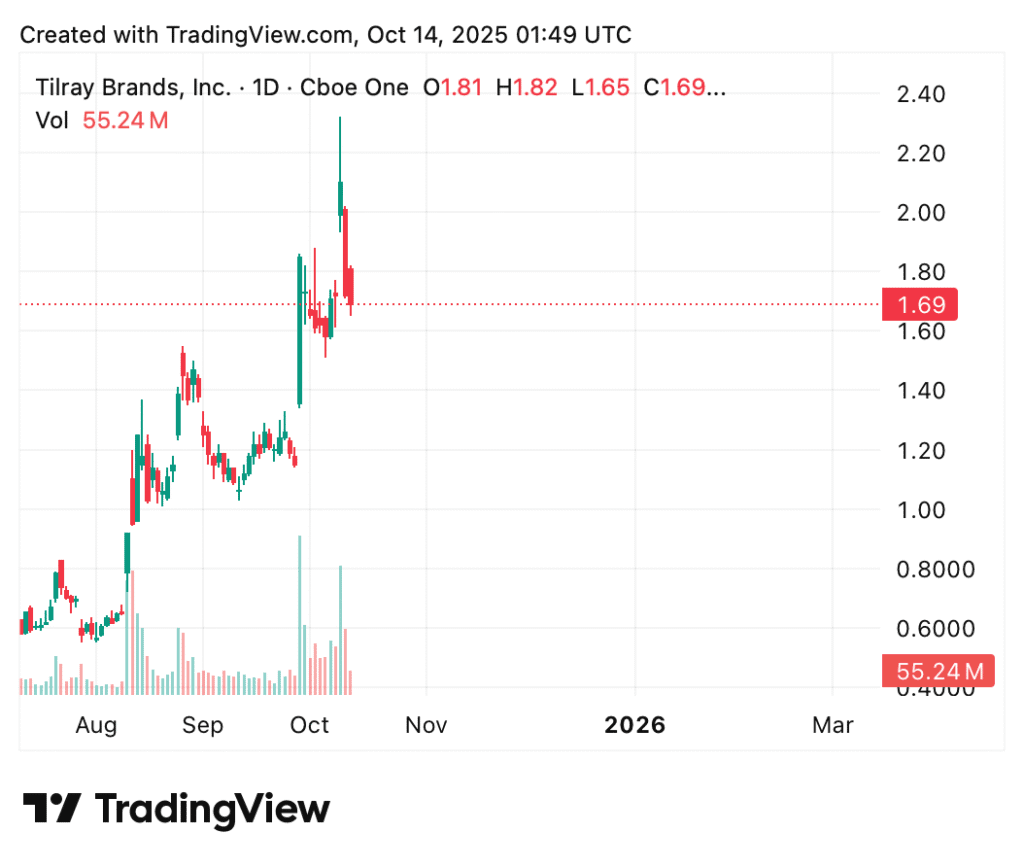
How We Chose the Top Legal Cannabis Companies
When it comes to ranking the top publicly traded cannabis companies of 2025, the goal isn’t just to chase headlines – it’s to identify brands with staying power. After years of industry volatility, we looked beyond momentary stock surges to focus on financial resilience, transparency, and sustainable growth.
Our selection process combines both fundamental analysis and real-world traction, using a blend of financial data, market research, and brand reputation within the legal cannabis and hemp sectors.
Key Factors Considered
- Revenue Growth & Profitability:
Companies with consistent year-over-year revenue growth and improving margins earned top marks. Multi-state operators like Green Thumb Industries (OTCQX: GTBIF) and Curaleaf Holdings (OTCQX: CURLF) continue to report strong fundamentals and recurring cash flow – a sign of maturity in an industry once defined by losses. - Market Capitalization & Scale:
Larger market caps typically reflect greater investor confidence, but we also considered companies with smaller valuations that are demonstrating disciplined expansion, such as Verano Holdings (OTCQX: VRNOF) and Cresco Labs (OTCQX: CRLBF). - Geographic Diversification:
We prioritized cannabis companies with exposure to multiple regulated markets. Operators expanding across the U.S., Canada, and Europe – including Tilray Brands (NASDAQ: TLRY) and Canopy Growth (NASDAQ: CGC) – scored higher for risk mitigation and global scalability. - Regulatory Compliance & Transparency:
In this space, compliance is currency. Brands that maintain clear reporting, proper licensing, and responsible marketing (avoiding claims about medical efficacy) earned stronger rankings. Publicly traded companies are required to file quarterly results, which provides essential visibility into operations. - Product Innovation & Brand Differentiation:
We looked for companies innovating in adjacent categories – such as hemp-derived cannabinoids (CBD, CBN, THCA), functional mushrooms, or cannabis-infused beverages. Tilray’s acquisition of several U.S. craft beer brands and Trulieve Cannabis (OTCQX: TCNNF)’s patient-focused medical products are strong examples of diversified growth strategies. - Balance Sheet Health:
Companies with low debt, improving free cash flow, and manageable SG&A costs are better positioned for long-term stability. Investors today value profitability over promises – a major shift from the speculative boom years of 2018–2020.
Data Sources Used
To maintain accuracy, this list incorporates data and analysis from multiple trusted industry and financial platforms:
- New Cannabis Ventures Public Company Revenue Tracker
- Investing News Network Cannabis Market Reports
- Yahoo Finance Stock Summaries
- NerdWallet Cannabis Stock Investing Guide
Our Ranking Philosophy
We’re not promoting any single stock – instead, our goal is to provide readers with an objective framework for analyzing legal cannabis companies on their own. Metrics like revenue per store, EBITDA margin, and state licensing footprint are all critical for assessing real value versus speculation.
By using this transparent selection process, we can separate hype from performance – highlighting companies that have not only survived the shakeout but are leading the way toward a more professional, compliant, and sustainable cannabis economy.
Next, let’s look at the current leaders in this space – the top 10 publicly traded cannabis companies making waves in 2025.
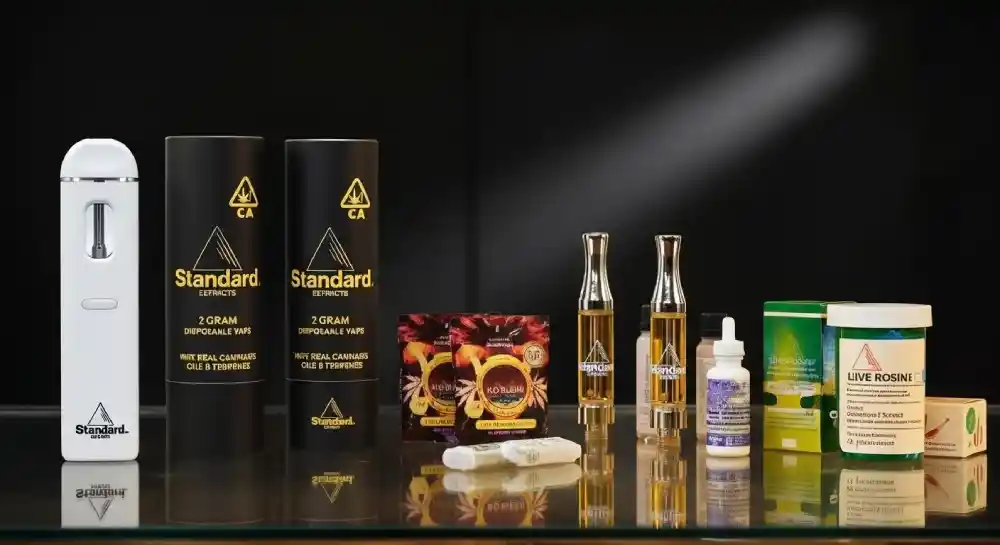
Top 10 Publicly Traded Cannabis Companies (2025 Edition)
After years of consolidation and recalibration, the legal cannabis market in 2025 is being led by a handful of disciplined, well-capitalized, and vertically integrated operators. These companies are not only surviving – they’re setting the new standard for profitability and responsible growth.
Below, we highlight the top 10 publicly traded cannabis companies shaping the industry this year. Each entry includes the company’s ticker symbol, market presence, and key performance notes to help readers and investors track the strongest players in the market.
10 publicly traded cannabis companies
| Rank | Company | Ticker | Headquarters | Highlights (2025) |
|---|---|---|---|---|
| 1 | Curaleaf Holdings | OTCQX: CURLF | Massachusetts, USA | One of the world’s largest cannabis companies, operating across 20+ U.S. states and several European markets. Curaleaf continues to lead with strong retail sales, premium flower brands, and expanding global distribution networks. Their recent expansion into the German medical market solidifies their international footprint. |
| 2 | Green Thumb Industries | OTCQX: GTBIF | Chicago, Illinois | Known for steady profitability and operational efficiency, GTI remains one of the few U.S. operators posting positive net income. With over 85 retail locations under its Rise™ and Essence™ banners, GTI’s balanced approach between medical and recreational markets continues to pay dividends. |
| 3 | Trulieve Cannabis | OTCQX: TCNNF | Tallahassee, Florida | The dominant medical cannabis provider in Florida, Trulieve has expanded into Georgia, Pennsylvania, and Arizona. Known for its customer-first model and cost control, Trulieve is one of the few MSOs maintaining strong EBITDA margins despite price compression in key states. |
| 4 | Verano Holdings | OTCQX: VRNOF | Chicago, Illinois | Verano operates premium dispensaries under the Zen Leaf™ brand and continues to capture share in adult-use markets like New Jersey and Illinois. Its focus on high-end product lines and branding has made it one of the most recognized names among cannabis connoisseurs. |
| 5 | Cresco Labs | OTCQX: CRLBF | Chicago, Illinois | Cresco remains a marketing and brand powerhouse with deep roots in product distribution. Their acquisition strategy and national footprint continue to make them a leader in wholesale and retail cannabis sales, particularly in Illinois and Pennsylvania. |
| 6 | Tilray Brands Inc. | NASDAQ: TLRY | Leamington, Ontario | Tilray has become one of the most diversified players in the industry – spanning cannabis, hemp, craft beverages, and wellness. After merging with Aphria, Tilray expanded into the U.S. craft beer market and CBD wellness space. In 2025, the company remains one of the most watched cannabis stocks due to its cross-border potential and strong leadership team. |
| 7 | Cronos Group Inc. | NASDAQ: CRON | Toronto, Ontario | Backed by Altria Group (parent company of Marlboro), Cronos has leveraged its strategic partnerships to fund R&D and expand globally. Its focus on cannabinoid science and vaporization technology positions it well for the next phase of regulated markets. |
| 8 | Canopy Growth Corporation | NASDAQ: CGC | Smiths Falls, Ontario | Canopy Growth has weathered multiple restructurings and continues to refine its operations. Its entry into the U.S. market via Canopy USA Holdings and its focus on premium CBD and infused products have kept it relevant in an evolving industry. |
| 9 | Columbia Care Inc. | OTCQX: CCHWF | New York, USA | Recently integrated into Cresco Labs’ operations, Columbia Care remains a major player in the Northeast. Its disciplined financial management and broad geographic reach make it one of the most strategically positioned MSOs in 2025. |
| 10 | Jazz Pharmaceuticals | NASDAQ: JAZZ | Dublin, Ireland | While not a traditional cannabis grower, Jazz Pharmaceuticals is included for its cannabinoid-based therapy Epidiolex, an FDA-approved CBD formulation for epilepsy. Its presence demonstrates how pharmaceutical innovation continues to drive legitimacy in the broader cannabinoid market. |
Honorable Mentions
- TerrAscend Corp (OTCQX: TRSSF) – Gaining ground in U.S. retail and cultivation, with strong leadership and product consistency.
- Planet 13 Holdings (OTCQX: PLNHF) – Famous for its Las Vegas “cannabis superstore,” it continues to expand with entertainment-based retail models.
- Organigram Holdings (NASDAQ: OGI) – Lean and innovation-driven, focusing on efficient cultivation and value-tier flower products.
Investment Snapshot: The Cannabis Market in 2025

Despite lingering federal uncertainty, the total legal cannabis market in North America is expected to surpass $35 billion in annual sales by the end of 2025. Analysts forecast strong growth driven by new adult-use markets (Ohio, Pennsylvania, and Florida), improved regulatory frameworks, and continued
Best Performing Cannabis Stocks in 2025 (What’s Driving Returns)
After years of turbulence, 2025 has brought a cautious resurgence for several of the best-performing cannabis stocks. In fact, The difference between the winners and laggards this year comes down to one thing: discipline.
Meanwhile, Companies that tightened their operations, reduced debt, and expanded into stable product categories are outperforming those that relied solely on rapid expansion or speculative hype. As a result, As investors become more discerning, markets are rewarding steady profitability and transparent reporting over flashy growth promises.
2025’s Best Performing Cannabis & Hemp Stocks (YTD Snapshot)
| Company | Ticker | YTD Performance* | Highlights |
|---|---|---|---|
| Green Thumb Industries | OTCQX: GTBIF | +42% | GTI maintains one of the most efficient operating models in U.S. cannabis, with strong same-store sales, growing wholesale revenue, and five straight quarters of profit – making it a 2025 standout. |
| Trulieve Cannabis | OTCQX: TCNNF | +31% | After aggressive cost-cutting and renewed focus on core medical markets, Trulieve’s margin recovery has restored investor confidence – and Florida’s 2025 legalization ballot could fuel further growth. |
| Curaleaf Holdings | OTCQX: CURLF | +28% | With expansions into Germany and Portugal, Curaleaf has evolved into a global operator. International medical revenue is up nearly 20% YoY, backed by disciplined U.S. retail and steady wholesale growth. |
| Tilray Brands Inc. | NASDAQ: TLRY | +25% | Tilray’s pivot into hemp-based wellness and craft beverages is paying off. Its Anheuser-Busch craft beer acquisition and expanding CBD line balance cannabis volatility, positioning Tilray as a strong global brand. |
| Verano Holdings | OTCQX: VRNOF | +18% | Verano’s boutique retail model and premium Zen Leaf™ products resonate in mature markets like Illinois and New Jersey. Strong branding and disciplined capital management keep the company solidly profitable. |
| Canopy Growth Corporation | NASDAQ: CGC | +12% | After years of restructuring, Canopy’s lean, focused strategy is finally showing results. Its U.S. partnership model through Canopy USA Holdings positions it well for growth if federal reform advances. |
| Cronos Group Inc. | NASDAQ: CRON | +8% | Backed by Altria’s investment, Cronos prioritizes R&D and wellness over rapid expansion. Strong cash reserves and stability make it a lower-risk choice for cautious investors. |
| Jazz Pharmaceuticals | NASDAQ: JAZZ | +6% | While not a direct cannabis grower, Jazz’s FDA-approved CBD drug Epidiolex continues to drive consistent revenue growth, proving the power of legitimate cannabinoid medicine within the regulated pharmaceutical landscape. |
Note
*Performance estimates based on year-to-date data as of October 2025. Percentages reflect approximate trading trends from publicly available market data and industry analysis.
What’s Driving Cannabis Stock Performance in 2025
The companies outperforming this year have one or more of the following in common:
- Operational Efficiency: Focusing on cost control, leaner staffing, and high-margin products instead of chasing market share at any price.
- Diversification: Expanding into legal, lower-risk categories like hemp, CBD, and functional wellness – areas less dependent on federal cannabis reform.
- Strategic Partnerships: Leveraging alliances with beverage, tobacco, and pharma industries to share infrastructure and R&D costs.
- Regulatory Momentum: Growing optimism around U.S. rescheduling of cannabis (from Schedule I to Schedule III) has lifted investor confidence and trading volume.
- Consumer Shifts: Demand for microdosed, wellness-oriented, and hemp-derived products is helping stabilize sales as recreational markets mature.
Sector Trends to Watc
As 2025 continues, analysts expect market consolidation to accelerate. Smaller operators may be acquired or forced out due to thin margins and limited capital access, while top-tier brands – like GTI, Curaleaf, and Tilray – continue to strengthen their balance sheets and national footprints.
Investors are also paying close attention to the overlap between cannabis, hemp, and functional mushrooms. The rise of adaptogenic wellness products, hemp-infused beverages, and legal mushroom supplements reflects a broader consumer movement toward natural mood support and plant-based recovery.
Next, we’ll explore the flip side of this story – five once-promising cannabis and mushroom companies that failed, and what their collapse teaches us about risk, regulation, and resilience.
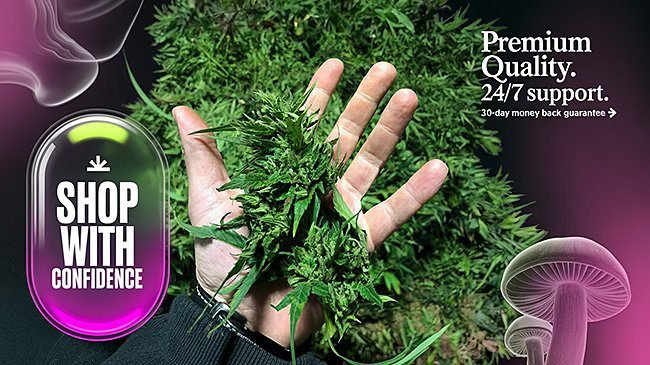
Five Cannabis & Mushroom Giants That Went Out of Business – and What We Can Learn
For every success story in the cannabis market, there’s a cautionary tale. The early boom years created unrealistic expectations and reckless spending, leading to a wave of cannabis bankruptcies and failed marijuana companies. As the industry matures in 2025, understanding why cannabis companies fail has become just as important as knowing which stocks to buy.
Below are five once-dominant cannabis and mushroom brands that collapsed – and the lessons every entrepreneur, investor, and small business owner can take from their downfall.
1. MedMen Enterprises (OTCMKTS: MMNFF)
Once dubbed the “Apple Store of Weed,” MedMen was the poster child of early cannabis optimism. The company expanded rapidly across California, Florida, and New York, operating luxury dispensaries and celebrity-backed campaigns. But by 2024, MedMen filed for bankruptcy after years of debt, executive turnover, and poor cash management.
Key Reasons for Failure: Overexpansion, unsustainable overhead, and leadership instability.
Lesson: Scaling fast means nothing if operations aren’t profitable – a mistake many early cannabis brands made during the hype era.
2. CannTrust Holdings (TSX: TRST) / (OTC: CNTTF)
Canada’s CannTrust Holdings was once considered a model for medical cannabis compliance – until regulators discovered unlicensed grow rooms in 2019. The resulting Health Canada suspension wiped out millions in shareholder value and led to class-action lawsuits.
Key Reasons for Failure: Compliance violations, poor corporate governance, and loss of consumer trust.
Lesson: In the cannabis industry, transparency is currency. One regulatory scandal can destroy even the strongest balance sheet.
3. JuicyFields (EU-based “crowdgrow” platform)
The now-infamous JuicyFields promised investors massive returns by crowdsourcing cannabis cultivation investments across Europe and Latin America. However, in 2022, the company vanished overnight, leaving investors defrauded of an estimated €645 million. The scandal became one of the largest cannabis Ponzi schemes in modern history.
Key Reasons for Failure: Fraudulent business practices, lack of regulation, and investor greed.
Lesson: If an investment promises guaranteed returns in cannabis, it’s probably too good to be true.
4. Wayland Group (formerly Maricann Group Inc.)
Wayland Group was an early Canadian licensed producer that went public during the cannabis stock craze of 2018. Despite international expansion efforts, mounting debts and mismanagement forced it into creditor protection by 2019. Its collapse marked one of the first major public cannabis company bankruptcies in Canada.
Key Reasons for Failure: Overleveraged acquisitions and inconsistent financial oversight.
Lesson: Sustainable growth depends on cash flow, not constant fundraising.
5. DionyMed Brands Inc. (CSE: DYME)
Once hailed as a promising California multi-state operator, DionyMed Brandscollapsed in 2019 when lenders called in loans the company couldn’t repay. Despite strong branding and celebrity partnerships, its aggressive financing strategy backfired – leaving investors empty-handed.
Key Reasons for Failure: Poor financial management, debt dependency, and unrealistic revenue forecasts.
Lesson: In cannabis, access to capital is not the same as profitability.
Bonus: Defunct or Restructured Mushroom Companies
The functional and psychedelic mushroom boom mirrored cannabis’s early trajectory – rapid growth, limited regulation, and investor FOMO. A few high-profile examples have already burned out:
- Synthesis Institute – once a leader in psilocybin therapy retreats, it filed for bankruptcy in 2023 due to licensing delays and unsustainable overhead.
- Red Light Holland (U.S. division) – restructured after shifting from psychedelic research to consumer products, proving that regulation moves slower than hype.
- PureShrooms – a micro-dosing startup that failed to meet labeling compliance and was forced to shut down its online operations.
Lesson from the Mushroom Market: Even legal functional mushroom companies must operate transparently, use third-party testing, and comply with supplement regulations to earn consumer trust.
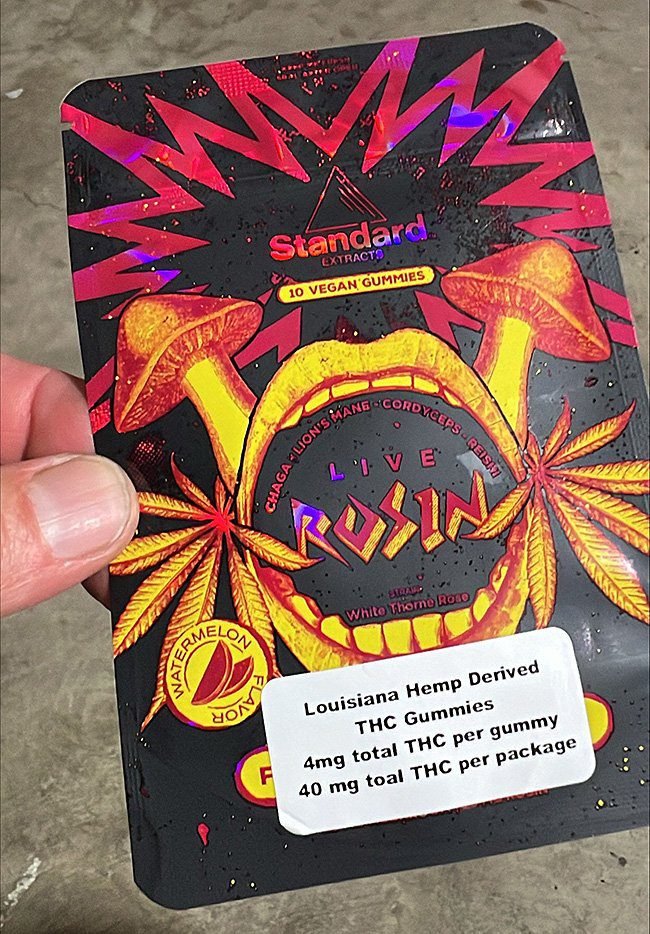
Key Takeaways: Why Cannabis Companies Fail
- Overexpansion Without Profitability: Many early operators mistook fast growth for financial success.
- Regulatory Negligence: Ignoring compliance obligations (as CannTrust did) can trigger irreversible damage.
- Debt Dependency: Borrowing heavily without cash-flow discipline leads to collapse when funding dries up.
- Leadership Instability: Frequent executive turnover undermines investor and consumer confidence.
- Lack of Transparency: Failing to report accurate financials or lab results damages brand reputation permanently.
Understanding these failures helps investors and entrepreneurs identify warning signs early. The difference between the companies that survived and those that collapsed often came down to simple fundamentals – accountability, financial discipline, and consumer trust.
Next, we’ll look ahead at the trends shaping the future of cannabis and hemp in 2025 – and how smart operators are avoiding these same pitfalls.
Trends Reshaping the Legal Cannabis Industry in 2025
The cannabis industry of 2025 looks dramatically different from the chaotic gold rush of five years ago. Gone are the days of “growth at all costs.” Today’s winning cannabis companies – from Tilray Brands (NASDAQ: TLRY) to Green Thumb Industries (OTCQX: GTBIF) – are focused on sustainability, diversification, and compliance.
For investors, entrepreneurs, and consumers alike, these shifts represent a more stable and mature industry built on transparency and innovation. Below are the major cannabis, hemp, and mushroom market trends shaping the future of legal plant wellness.
1. Federal Momentum and Rescheduling Reform
After years of gridlock, the U.S. Department of Health and Human Services (HHS) formally recommended that cannabis be rescheduled from Schedule I to Schedule III under the Controlled Substances Act. This single change could transform the industry by allowing cannabis businesses to:
- Deduct normal business expenses – ending the IRS 280E tax burden that crippled profits for years
- Access banking, lending, and credit card processing services legally
- Attract institutional investors previously blocked by federal restrictions
Rescheduling doesn’t mean full legalization, but it’s the most significant regulatory step forward in over a decade. Investors are responding positively – with cannabis stocks like Curaleaf (CURLF) and Cresco Labs (CRLBF)seeing increased trading volumes in Q3 2025.
Watermelon Live Rosin Gummies – Pack of 5 (BEST SELLER)
2. The Rise of Hemp-Derived Cannabinoids and “Functional Wellness” Products
As more states regulate THC, many companies are leaning into hemp-derived cannabinoids such as THCA, Delta-8, CBN, and CBD. These compounds offer a compliant, lower-risk alternative to traditional marijuana – appealing to consumers seeking balance, not intoxication.
Brands like StandardCBD are at the forefront of this movement, combining cannabinoids with functional mushrooms and terpenes to create mood-enhancing, body-balancing formulations that remain 100% Farm Bill compliant.
Hemp’s versatility – from edibles and tinctures to topicals and beverages – is fueling explosive growth across wellness markets, with analysts forecasting the U.S. hemp industry to exceed $20 billion in retail sales by 2027.
Hemp Health One CBD Calming Pet Tincture with 500mg
3. Cannabis and Mushroom Synergy: The New Wellness Frontier
The next generation of wellness consumers isn’t just looking for a high – they’re looking for holistic well-being. This has led to an unprecedented fusion between the cannabis and functional mushroom sectors. Products that combine CBD or Delta-8 with Amanita Muscaria, Lion’s Mane, or Reishiare creating a new category of plant-based wellness.
Consumers are calling it the “Calm Focus Revolution” – balancing mind and mood naturally through adaptogens, terpenes, and cannabinoids. At StandardCBD, this shift is embodied in products like the Functional Mushroom Gummies with Amanita Muscaria, which merge hemp-derived cannabinoids with nature’s most studied mushrooms.
As a result, Google search interest in “legal mushroom gummies”, “Amanita products,” and “CBD and mushroom blends” has increased over 180% since early 2024 – making this one of the most promising crossover markets in plant-based wellness.
4. Consolidation and Strategic Mergers
With shrinking margins and limited access to capital, 2025 has become a year of consolidation across both U.S. and Canadian cannabis sectors. Major players like Cresco Labs and Columbia Care finalized long-planned mergers, while others like Tilray are diversifying into beverages and wellness categories through acquisitions.
Smaller brands are surviving by specializing in niche verticals – such as topicals, gummies, or minor cannabinoids – and leveraging storytelling and authenticity to build consumer trust. The future belongs to companies that can scale smart, not just fast.
5. Clean Label and Lab-Tested Consumer Demand
Post-pandemic consumers are more educated than ever. They want to know what’s in their product and where it’s made. That means clean ingredients, transparent sourcing, and third-party lab verification are now essential for credibility.
This consumer mindset has accelerated the growth of brands like StandardCBD’s Pain Cream with Delta-8 & CBD – a formulation crafted with simple, natural ingredients and clear lab testing available online. It’s part of a broader trend where smaller U.S.-based brands are outpacing corporate giants by focusing on authenticity over advertising.
6. Tech-Driven Efficiency and Automation
From automated trimming and AI inventory forecasting to blockchain-powered seed-to-sale tracking, cannabis operators are embracing technology to cut costs and improve compliance. Automation and data transparency are no longer optional – they’re the difference between profitability and extinction in 2025’s hyper-competitive market.
Modern investors increasingly favor companies with integrated tech infrastructure, as it reduces regulatory risk and boosts operational visibility – especially in states with tight compliance standards.
7. The “California Effect”: West Coast Innovation Leads the Way
Despite high taxes and overregulation, California remains the epicenter of cannabis innovation. The state’s companies are pioneering solventless extraction, sustainable packaging, and terpene-driven formulations that set the tone for national brands.
Humboldt County, in particular, has reemerged as a symbol of craft cultivation and clean cannabis ethics. It’s also where StandardCBD was born – embodying California’s values of purity, sustainability, and community-driven business. As cannabis and hemp products become mainstream, Humboldt’s legacy continues to define quality nationwide.
The Bottom Line: A Smarter, Cleaner, More Conscious Industry
In 2025, the cannabis industry is no longer a gamble – it’s an ecosystem. The leaders are disciplined, data-driven, and diverse. The failures of the past have given rise to a generation of operators who understand that compliance, transparency, and craftsmanship aren’t trends – they’re the foundation of longevity.
Whether you’re an investor tracking “cannabis market trends 2025” or a wellness advocate exploring “CBD and mushroom synergy products”, the message is clear: The future belongs to those who balance innovation with integrity.
Next, we’ll explore the risks and realities of cannabis investing – including what to look for before adding any cannabis stock to your portfolio.
Risks and Realities of Investing in Cannabis Stocks
The cannabis sector offers incredible upside – but it’s not for the faint of heart. While some stocks are rebounding in 2025, others remain stuck in cycles of dilution, debt, and regulatory limbo. For investors, entrepreneurs, and even hemp-based wellness brands, understanding the risks of cannabis investing is essential before making long-term decisions.
Below are the most significant risks and realities facing cannabis investorstoday, and how these challenges are reshaping the market for the better.
1. Federal Uncertainty and Regulatory Complexity
Despite strong momentum toward rescheduling and potential federal reform, cannabis remains illegal under U.S. federal law. This creates a web of state-by-state compliance standards that make national scalability extremely complex – especially for companies trying to operate across multiple jurisdictions.
The long-awaited rescheduling from Schedule I to Schedule III under the Controlled Substances Act may reduce the IRS 280E tax burden, but it doesn’t fully legalize cannabis nationwide. That means banking access, interstate commerce, and traditional financing remain constrained for many operators.
What It Means for Investors: Even top-performing stocks like Curaleaf (OTCQX: CURLF) and Trulieve (OTCQX: TCNNF) remain vulnerable to political delays. Until full legalization or a unified regulatory framework emerges, volatility will continue to define this market.
2. Capital Constraints and Limited Access to Banking
Because cannabis remains federally restricted, many companies struggle with banking, merchant processing, and institutional lending. This creates a reliance on private equity, convertible debt, and share dilution – all of which can erode shareholder value.
Smaller hemp and CBD companies, however, enjoy more flexibility. As StandardCBD demonstrates, operating within the Farm Bill’s legal hemp framework allows businesses to access traditional banking, e-commerce platforms, and national shipping – without the federal red tape faced by THC-based brands.
Lesson for Investors: Look for companies that balance debt and equity carefully, maintain positive cash flow, and operate within compliant product categories like hemp-derived cannabinoids or functional mushrooms.
3. Oversupply and Price Compression
One of the most persistent challenges facing cannabis operators is oversupply. In markets like California, Oregon, and Colorado, production capacity far exceeds consumer demand – driving down wholesale flower prices and squeezing margins for growers.
This price compression forces companies to diversify into value-added products such as edibles, beverages, and topicals. For example, Tilray’s move into craft beer and hemp-based beverages has provided a buffer against falling cannabis margins, while U.S. brands like Verano (OTCQX: VRNOF) and Cresco Labs (OTCQX: CRLBF) have leaned into retail and branded products for stability.
What It Means for Entrepreneurs: Smaller brands can survive price competition
Lessons from the Rise and Fall of Cannabis Titans
The cannabis industry has been one of the most volatile markets of the past decade – a story filled with rapid growth, hype-fueled IPOs, and inevitable correction. The downfall of once-celebrated brands like MedMen and CannTrust wasn’t just about bad timing – it was about weak fundamentals. And for the companies that survived the shakeout, those lessons became the blueprint for sustainability.
Here are the biggest lessons investors, entrepreneurs, and even small hemp and CBD brands can learn from the rise and fall of cannabis titans.
1. Profitability Beats Hype Every Time
For years, investors poured billions into unprofitable cannabis startups that promised massive growth. Many companies prioritized flashy expansion over disciplined execution – and when the capital dried up, they collapsed under their own weight.
Today, success looks different. The best-performing cannabis operators – like Green Thumb Industries (OTCQX: GTBIF) and Trulieve Cannabis (OTCQX: TCNNF) – are laser-focused on cash flow, operational efficiency, and disciplined expansion. They’ve proven that a smaller, profitable footprint beats a sprawling empire built on debt.
Takeaway: Growth is good, but sustainable growth is better. In cannabis and hemp, positive cash flow is the ultimate sign of health.
2. Compliance Isn’t Optional – It’s Your Brand
From CannTrust’s unlicensed grow scandal to the countless “gray market” brands that vanished overnight, one thing is clear: compliance is everything. Cannabis is one of the most heavily regulated industries in the world – and regulators are increasingly unforgiving.
Consumers and investors alike now expect transparency, verified lab results, and consistent quality. This is exactly why StandardCBD invests heavily in third-party testing, QR code verification, and honest labeling. Trust isn’t a marketing slogan – it’s the foundation of longevity.
Don't Just Take Our Word For IT

“I’ve tried many vape products claiming to use real terpenes, but this one truly delivers. The flavors are vibrant and true to the source, and the hits are incredibly smooth. It’s evident that a lot of care and attention to detail went into creating this product”
Sasha Belker
Princeton, New Jersey

“Loving the Amanita Chocolate Bar! In San Diego I’m always up for a good time, and this is my new go-to. Just one piece and I feel amazing—way better than a drink. Perfect for unwinding and sparking creativity without the hangover.”
Julia Chastely
Malibu, California

Christopher Jenner
Mar Vista, California

“The best cartridge for taking on the boat and to the beach with my girls. Only problem is, they always ask to smoke MY pen because the flavor is amazing! Stocking up!”
Amy Rodgers
Miami, Florida

Karla Doughty
Charleston, South Carolina

Tawny Bleeker
Atlanta, Georgia
Takeaway: Whether you’re a multi-state operator or a boutique hemp brand, compliance builds confidence – and confidence builds loyalty.
3. Diversification Protects Against Volatility
The companies that survived the cannabis crash were the ones that diversified intelligently. Tilray Brands (NASDAQ: TLRY) expanded into hemp, CBD, and craft beverages. Jazz Pharmaceuticals (NASDAQ: JAZZ) leveraged cannabis-based medicine like Epidiolex to enter the pharmaceutical sector.
For emerging brands, diversification can mean blending cannabinoids with functional mushrooms, terpenes, or adaptogens – areas that expand the consumer base while reducing legal exposure. This approach is at the heart of StandardCBD’s wellness philosophy: using multiple natural compounds to support balance, focus, and recovery.
Takeaway: Don’t depend on one molecule, market, or product line. In cannabis, versatility equals resilience.
4. Brand Storytelling and Authenticity Matter
In the early rush of legalization, hundreds of brands flooded dispensary shelves with generic packaging and identical THC percentages. But as the market matured, consumers began gravitating toward authentic brands with a real story – especially those rooted in community and craftsmanship.
That’s where smaller, founder-led brands like StandardCBD shine. Based in Humboldt County, California – the birthplace of America’s cannabis movement – the company’s message of “simple ingredients, made with love”resonates with consumers seeking genuine connection in a corporate-dominated market.
Takeaway: In a crowded market, authenticity is your competitive edge. Tell your story, build your community, and your customers will become your advocates.
5. Data and Discipline Drive Longevity
Today’s top cannabis executives talk more about spreadsheets than strains – and for good reason. Financial discipline, data-driven decision-making, and transparent metrics are replacing the “stoner CEO” stereotype that once defined the industry’s early years.
Companies that track inventory efficiency, regional demand, and product-level margins are the ones attracting institutional investment. For smaller businesses, tools like Google Analytics, Shopify Insights, and CRM automation are making it easier than ever to run lean, smart, and scalable operations.
Takeaway: Numbers don’t lie. In a post-hype cannabis market, accountability and analytics are the new competitive advantages.
6. Community and Education Create Staying Power
Whether you’re a dispensary, a hemp wellness brand, or a mushroom supplement company, your audience wants to be informed – not sold. Brands that lead with education and transparency are winning over both customers and regulators.
At StandardCBD, every product page, lab report, and blog post serves a bigger mission: helping consumers make informed choices about wellness. From CBD topicals to Amanita mushroom chocolates, the brand focuses on empowerment, not hype – and that’s the kind of trust money can’t buy.
Takeaway: Education is marketing. When you teach, you build credibility – and credibility builds lifetime customers.
The Ultimate Lesson: Integrity Wins in the Long Run
The cannabis industry has grown up. The flashy “green rush” is over, and the brands that remain are those built on honesty, transparency, and resilience. Whether you’re an investor looking for stable growth or a consumer searching for authentic wellness, the lesson is the same:
“Integrity is the best investment you can make – because trust compounds faster than capital.”
From Wall Street to Humboldt, the future of cannabis belongs to the brands that combine craftsmanship with conscience – and StandardCBD is proud to be part of that new era of ethical plant medicine.
Next, we’ll explore how hemp and functional mushrooms are reshaping natural wellness – and how companies like StandardCBD are leading the movement with legal, effective, and lab-tested alternatives.

Where Hemp & Functional Mushrooms Fit In – The StandardCBD Difference
After more than a decade of volatility in the cannabis industry, one truth has emerged: people aren’t just chasing a high – they’re seeking healing, balance, and clarity. That’s where hemp-derived cannabinoids and functional mushrooms are rewriting the next chapter of natural wellness.
At StandardCBD, we believe in the power of plants – not hype. Our mission is to provide clean, lab-tested, and Farm Bill–compliant products that help people live better every day. From pain relief to mood balance, our formulations combine the wisdom of nature with the rigor of science.
1. Hemp: The Heart of Modern Wellness
Hemp’s story is one of redemption. Once banned and misunderstood, it’s now recognized as a versatile powerhouse – delivering relief, relaxation, and recovery without intoxication. The resurgence of hemp-derived cannabinoidslike CBD, Delta-8, and THCA has given consumers natural, federally legal alternatives to traditional THC products.
Our CBD Pain Cream with Delta-8 exemplifies that potential. Formulated in Humboldt County, California with Lidocaine, Menthol, Arnica, and Terpenes, it provides fast-acting topical relief that supports recovery without side effects or synthetic additives. Each jar is crafted with the care and integrity that defines the StandardCBD ethos.
SEO Tip for Readers: Many people search for “best CBD cream for pain,” “Delta-8 topical benefits,” and “natural pain relief alternatives.” Our pain cream checks every box – it’s effective, legal, and backed by transparency.
2. Functional Mushrooms: The Future of Focus & Calm
While psilocybin mushrooms make headlines for their potential mental health benefits, legal functional mushrooms like Amanita Muscaria, Lion’s Mane, and Reishi are leading a parallel revolution in wellness – one that supports focus, mood, and resilience without requiring a prescription.
Our Functional Mushroom Gummies are a perfect example of that balance. Infused with proprietary Amanita extracts and natural flavors, they deliver a smooth, uplifting experience that helps the mind and body reset naturally. Customers describe feeling “centered, creative, and calm” – a sign that these natural compounds are helping people reconnect with themselves in a fast-paced world.
And for those seeking a more immersive experience, the Amanita Muscaria Chocolate Bar offers a delicious and mindful way to explore the benefits of legal, psychoactive mushrooms – responsibly, safely, and ethically.
3. The Intersection of Hemp & Mushrooms
We’re entering an era where plant synergy defines modern wellness. Combining cannabinoids with functional mushrooms creates complementary effects – cannabinoids support physical recovery and inflammation control, while mushrooms enhance neurobalance and mood stability.
This isn’t about chasing trends – it’s about creating long-term wellness solutions that support the nervous system, immune function, and mental clarity. Consumers are discovering that they don’t have to choose between “psychedelic healing” and “legal wellness” – they can have both through smart, compliant formulations.
That’s the philosophy behind everything we do at StandardCBD: simple ingredients, made with love.
4. Why Small American Brands Matter
In a market dominated by corporate giants and imported products, choosing small U.S. businesses like StandardCBD helps keep wellness rooted in quality, accountability, and community. Every product is formulated, filled, and packaged domestically – supporting American jobs and sustainable supply chains.
When you buy from small hemp brands, you’re not just purchasing a product – you’re supporting a movement. A movement that values purity over profit, transparency over marketing, and people over algorithms.
Consumer Tip: Always look for COA lab reports, natural ingredients, and company contact info. If a brand won’t show you its test results, they don’t deserve your trust – or your money.
5. From Cannabis to Conscious Living
As cannabis, hemp, and mushrooms continue to converge, the wellness industry is undergoing a transformation – one that mirrors society’s broader shift toward mindfulness, sustainability, and authenticity. People no longer want to numb pain; they want to heal it. They don’t want to escape reality; they want to improve it.
StandardCBD stands at that crossroads – merging ancient plant wisdom with modern science to help people move, think, and feel better. Whether it’s a CBD Pain Cream that soothes sore joints or Amanita Chocolates that spark introspection, our goal is simple: to help Americans thrive – naturally.
Next, we’ll close this article with a look at where the cannabis and hemp markets are headed – and how conscious consumers are shaping the future of plant-based medicine.
10) Final Thoughts: The Future of Cannabis, Hemp & Mushroom Wellness
The cannabis industry has evolved from chaos to consciousness. What began as a “green rush” of speculation and hype has matured into a movement focused on integrity, transparency, and well-being. Today’s consumers aren’t just chasing trends – they’re seeking trustworthy, natural, and effective solutions for real-life challenges like pain, stress, and sleeplessness.
From cannabis to hemp to mushrooms, one theme stands out: plant medicine works best when it’s done right. When it’s cultivated responsibly, extracted cleanly, and delivered with honesty. That’s the StandardCBD way – and it’s how we’ve helped thousands of Americans rediscover balance through nature.
The StandardCBD Promise 🌿
Founded in Humboldt County, California – the heartland of American cannabis – StandardCBD is more than a brand; it’s a commitment to quality and compassion. Every product we make is built on three pillars:
- Transparency: Every batch is third-party tested with full Certificates of Analysis (COAs).
- Purity: We use simple, organic ingredients – free of pesticides, synthetic fillers, or harmful chemicals.
- Integrity: As a small, self-funded American business, we care about people more than profits – and that’s reflected in everything we do.
We believe in making plant wellness accessible, affordable, and authentic – whether through our CBD Pain Cream, our Functional Mushroom Gummies, or our Amanita Muscaria Chocolate Bar.
Why Choose a Small Business Like StandardCBD?
Big corporations may dominate headlines, but small American hemp brands are leading the way in innovation and integrity. Every time you support a company like StandardCBD, you’re investing in:
- Local jobs and sustainable agriculture – products crafted by real people, not mass factories.
- Honest pricing – premium wellness without inflated markups or empty promises.
- Community-driven care – customer service that treats you like family, not a transaction.
In a world of endless marketing claims, authenticity is rare. That’s why we stand behind every jar, gummy, and chocolate we sell – proudly made in Humboldt, and delivered nationwide.
Join the Plant Wellness Movement

The future of cannabis and hemp isn’t about escaping – it’s about evolving. It’s about connecting to nature, supporting your body, and making choices that align with your values.
If you’ve made it this far, you already understand that natural wellness starts with trust. Now, it’s your turn to experience it for yourself.
🌱 Experience Relief. Discover Balance. Feel the Standard Difference.
Shop StandardCBD Products
Stay Connected
Follow @StandardCBD on Instagram for product drops, behind-the-scenes updates, and wellness tips straight from Humboldt County. Together, we’re redefining what cannabis and mushroom wellness can be – honest, intentional, and built to last.
Thank you for supporting small American businesses that believe in healing the right way – with nature, not shortcuts.



